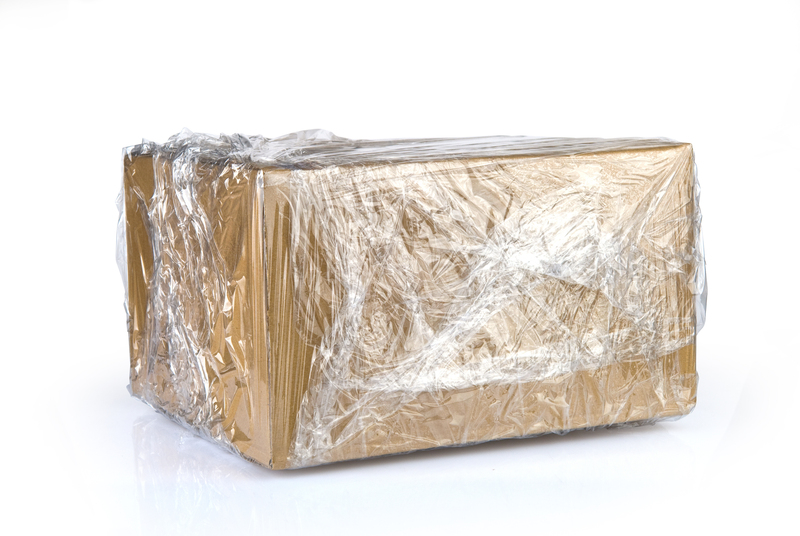Preserve Your Sofa with Proven Expert Storage Advice
Posted on 16/06/2025
Preserve Your Sofa with Proven Expert Storage Advice
Whether you're downsizing, redecorating, or simply making room for a new addition, the need to store your sofa safely may arise at some point. Sofas are often beloved centerpieces of our living spaces--making their preservation during storage absolutely vital. To avoid heartbreak from mildew, mold, frame damage or fabric deterioration, you must prepare, protect, and store your sofa correctly. This comprehensive, SEO-friendly guide covers everything you should know about sofa storage, including professional tips for long-lasting preservation.

Why Proper Sofa Storage Matters
Your sofa isn't just a piece of furniture--it's an investment in comfort and style for your home. Yet, sofas are also susceptible to a host of damages when stored improperly, such as:
- Moisture damage (mold, mildew, and rot)
- Fading from exposure to sunlight or inconsistent conditions
- Fraying or deterioration of fabric and upholstery
- Structural damage to frames and springs
- Pest infestation
By following proven expert storage advice, you can significantly extend the lifespan of your sofa and ensure it looks as good as new when you bring it back home. Let's dive into actionable steps for sofa preservation during storage.
Step 1: Get Your Sofa Ready for Storage
Clean Your Sofa Thoroughly
Before even thinking about moving your sofa to storage, it's crucial to clean it. Dust, crumbs, and minor stains can worsen over time, especially in enclosed environments. Here's how to clean your sofa for optimal preservation:
- Vacuum all surfaces--use upholstery attachments to get into crevices.
- Spot clean stains with an appropriate cleaner for leather, suede, or fabric. *Check manufacturer recommendations first!*
- For leather sofas, apply a leather conditioner to keep the hide from drying out during storage.
- Let the sofa dry completely before proceeding to the next step.
Disassemble What You Can
Expert tip: If your sofa has removable legs, arms, or cushions, take them apart. This not only makes transportation easier but also minimizes potential damage.
- Keep all hardware in a labeled bag attached to the sofa frame.
- Wrap loose parts individually in protective material.
Step 2: Select the Best Storage Location
Where you store your sofa matters almost as much as how you prepare it. Carefully consider these options:
Choose Climate-Controlled Storage Whenever Possible
Humidity and temperature swings can wreak havoc on wood, leather, and fabric. For the best sofa preservation, opt for a climate-controlled storage unit. These units maintain steady conditions, preventing mold growth and frame warping. If climate control isn't an option, prioritize dry, shaded, well-ventilated spaces over damp basements or uninsulated garages.
Protect from Sunlight and Dampness
- Never store sofas in direct sunlight: *fabrics and leather can fade swiftly.*
- Keep the area clean and free from water sources to avoid spills or dampness.
Step 3: Use Proper Packing and Protection
A good defensive layer can make all the difference in avoiding scratches, dust, and moisture problems. Experts recommend the following materials for wrapping your sofa:
- Furniture blankets or moving pads: Thick fabrics provide impact and dust protection.
- Plastic wrap (stretch film): Only if you leave some airflow--wrapping too tightly can trap moisture.
- Breathable covers: Specially designed sofa storage bags are best for long-term protection.
- Avoid using regular household plastic, which can seal in humidity and promote mildew.
How to Wrap Your Sofa Properly
- Wrap cushions and small parts separately in furniture blankets or soft material.
- Place a breathable cover or specially-designed furniture bag over the main frame.
- Secure covers with ties or gentle tape--avoid adhesive on upholstery.
- If stacking is necessary, never place heavy items atop your sofa.
Remember, expert storage advice always emphasizes breathability to prevent moisture buildup!
Step 4: Position Your Sofa for Longevity
The way your sofa sits in storage can make--or break--its structure and surface. Pay close attention to these guidelines:
- Never store your sofa on its side or unsupported ends--this causes warping.
- Keep sofas elevated using pallets or risers. This prevents contact with cold or damp floors and allows ventilation underneath.
- Leave space around the sofa for airflow. Don't pack items tightly against it.
- Position away from walls to minimize risk of dust and mold accumulating in hidden areas.
Step 5: Monitor and Maintain Your Sofa During Storage
Active monitoring can catch potential problems before they escalate. Even if your sofa is expertly wrapped and stored, inspect it every few months for peace of mind:
- Check for mold or musty smells. Address any dampness immediately.
- Re-tighten wrapping or covers. If your sofa cover shifts or loosens, reposition it!
- Inspect for pests. Droppings or shredded fabric? Take prompt action.
- Keep storage area clean. Ignore clutter and dust to ensure your sofa's environment remains pristine.
Extra Tips for Different Sofa Types
Storing Leather Sofas
- Condition leather before storage and again every few months if stored long-term.
- Never use plastic wrap directly on leather--opt for soft, breathable cloth covers.
Preserving Fabric Sofas
- Ensure the fabric is completely dry before wrapping and storing.
- Avoid scented sprays or cleaners that may attract pests during storage.
Protecting Sectional and Sleeper Sofas
- Disassemble all possible parts for easier, safer handling.
- Store mattress components vertically, flat, and covered for maximum hygiene.
What to Avoid When Storing Your Sofa
Even a single mistake can compromise your entire sofa preservation strategy. Steer clear of these common pitfalls:
- Wrapping a damp sofa, which traps moisture and results in mold.
- Piling boxes or bins on top--this crushes cushions and collapses frames.
- Ignoring pest prevention. Food crumbs especially can draw rodents or bugs.
- Storing in attics or basements prone to flooding or extreme temperatures.
- Using harsh chemical cleaners that linger on fabric or leather.
Frequently Asked Questions about Sofa Storage
How long can a sofa be safely stored?
With proper cleaning, wrapping, and storage in a climate-controlled unit, a sofa can remain in storage for years with minimal risk. Regular maintenance checks are crucial for long-term storage.
Can I store my sofa in a garage?
Garages are generally not recommended for sofa storage due to temperature swings and moisture. However, in moderate climates, with proper wrapping and elevation, a garage may work as a short-term solution.
What is the best wrapping material for long-term storage?
Breathable, fitted covers or furniture blankets are optimal. Avoid sealed plastic after the move-in, as this can trap condensation.
How do I prevent mold on my sofa during storage?
- Ensure the sofa is completely dry before wrapping.
- Use moisture absorbers (like silica gel packs) inside the storage area.
- Monitor humidity, especially in changing weather.

Proven Expert Storage Advice Recap
Storing your beloved sofa may seem daunting, but with this expert sofa storage guide, you can enjoy peace of mind throughout your transition. To preserve your sofa:
- Clean and dry it thoroughly.
- Disassemble where possible.
- Use protective, breathable wrapping.
- Choose a climate-controlled unit.
- Monitor and maintain regularly.
Implementing these strategies not only protects your investment but also ensures your sofa remains a treasured, comfortable feature for years to come. Remember: Expert sofa storage advice isn't just about keeping furniture safe--it's about preserving memories, comfort, and style for the future.
Final Thought: Store Your Sofa Smartly, Cherish It Forever
Whether you're hiring a professional moving service or tackling the project yourself, always prioritize proven storage techniques for your sofa. Take the extra time to wrap, elevate, and safeguard your sofa--your future self (and your living room) will thank you. Investing in expert storage advice today guarantees your sofa continues to serve as the heart of your home tomorrow.
Have you stored a sofa before? Share your experiences or ask your sofa storage questions in the comments below!



